Jump to:
What are Rotis?
Rotis are unique to the Indian subcontinent - a small bread plate-sized round, thin, soft flatbread made with just three ingredients – whole wheat flour, water, and oil. The perfect vessel for scooping curries and daals. Making rotis is a time-consuming and often frustrating exercise, especially for novice cooks. You knead the dough, roll out the rotis and then (try to) perfectly roast them (using a combination of a hot pan and open fire). The goal is to puff it up slightly without tearing it so that it remains soft and perfectly chewy. No pressure there! And then you have to repeat these actions for 10 or 20 or 30 rotis depending on how much your family loves rotis (in our case, it is a lot!).
As someone who has been cooking rotis for over three decades, I can assure you that you will still not make uniform rotis after years of practice. Some will be round, some not. Some might be thinner than others, some will tear and some will roast to a crispy consistency instead of a pliable softness. After a hard day at work when all you want to do is to sit and enjoy a quick oven baked curry or a slow cooked daal, making rotis from scratch by hand is the last thing on your mind. And you can only have so much rice. What do you do when you want to eat healthier carbs and lighter meals consisting of rotis or flatbreads, but don’t want to do all the hard work? You turn to Rotimatic instead - the world's first roti-making robot.
What is Rotimatic?
I first read about the Rotimatic in a news article on a Singapore website a couple of years ago on the eve of its launch in Singapore and the US. I was fascinated to learn that an Indian couple living in Singapore had spent over 8 years developing a kitchen robot that made fresh rotis (flatbreads) at the touch of a button. How could it be? How could a machine mimic a set of complex human actions that seasoned roti makers took years to perfect? Would it really work?
It really piqued my interest. So, I have been following their progress and news from time to time. There is a lot of buzz about it in the Indian roti-eating communities and and health conscious non-Indians seeking to expand their healthy eating options. I have even heard rave reviews from friends in the US who have bought the Rotimatic and are blown away by what it can do.
With its launch in Australia this year, I am very excited to be collaborating with the guys at Zimplistic to bring the Rotimatic experience to you. I have been taking my Rotimatic through the paces for the past few weeks and it has not disappointed. With a kitchen (and garage) full of appliances that I cook with and test out regularly, I am probably impressed with this one the most. Quite simply, it works! It does mimic complex human actions and produces the most beautiful, perfectly round, perfectly soft rotis at the press of a button.
And it is absolutely fascinating to watch. Because it is unlike anything you might have seen in your kitchen. A commercial strength machine in the form of a personal kitchen robot. For the first few times we made rotis, it was literally the “Roti Making Show” as we all pulled up our kitchen stools just to watch it knead the dough, press the rotis and puff them up before sliding them out to excited squeals all around. I wish I had received fanfare like that every time I toiled over a batch of rotis. Alas, I am just human and not an exciting kitchen robot.
How does the Rotimatic work?
Using the Rotimatic is a breeze. When you first start the machine, you connect it to wi-fi. This enables the company to track every device sold and monitor its performance. It also allows it to download updates from Zimplistic when they release them (new flours added, gluten-free flour capability etc). The Rotimatic is AI-enabled and future-proof, it learns and adapts from the roti-making process to make better ones as it goes along. There are three containers with orange-rimmed lids, one each for flour, water and oil. You fill these up and pop them on top. You start the Rotimatic up by pressing a button and select the flour you are using from the list of flours. You select the thickness of the roti, the roast level, the oil level and the number of rotis you want to make. And then it works its magic, making a perfect roti every 90 seconds. It is incredible!
Rotimatic in action - A Video Review
I made a video to show you how easy it is to use in the kitchen. In this video, I was making Samosa & Chutney Wraps (recipe below). Once I started the Rotimatic, it kept producing rotis automatically while freeing me up to quickly make the chutney and samosa filling. And just like that, a wholesome and nutrient-rich vegetarian dinner was ready for the whole family in just about 30 minutes. I think that is the most valuable feature of this machine. The freedom it gives you to cook other things or just relax while it does all the work for you.

Some Things To Note
- The Rotimatic uses the exact same ingredients that are used to make homemade roti from scratch. Flour, water, oil (and I like to add a pinch of salt). There are no additives or preservatives required.
- The Rotimatic comes recommended with a list of whole wheat flour brands. You must use only these flours as these are the ones tested by Rotimatic for optimum rotis. From whole wheat flours to Multigrain flours (that are a combination of wheat, oat, soy, corn, psyllium husk and chickpea), there are a whole range of nutrient, fibre and protein rich flours that you can use. The flours are easily available at any Indian grocers or online stores. Many Coles (in Australia) stores also stock some of these flours. I tried out a couple of these flours but my favourite was Aashirvad Select as the rotis were just beautiful and soft.
- My preferred settings for making the rotis (soft, light, puffy flatbread for rolling) is
Thickness =1/ Roast Level = 1/ Oil Level = 1
The rotis at this setting stay soft and pliable which means they can be made ahead and reheated in the microwave (they stay soft even after reheating).
- My preferred settings for making parathas (rustic thicker flatbreads for dipping) is
Thickness = 2-3 / Roast Level = 2 / Oil Level = 2
This setting produces thicker and more robust flatbreads with slightly crinkly edges. These are great for dipping and serving on cheese platters. They even make a great thin yeast-free pizza base for cooked toppings. - The Rotimatic takes about 6 minutes to warm up and start if it has been idle for a while. I find that if I am making rotis twice a day, it starts pretty much instantly the second time. After it starts up, it produces one perfectly round roti every 90 seconds.
My Rotimatic Review
Rotimatic Pros
- The Rotimatic is super easy to clean (I love this!). Two of the parts (dough kneading cup and tray) just clip off and detach for a quick hand wash or dust off with the cleaning brushes provided.
- The Rotimatic can make rotis, puris and pizzas. You can make different kinds of rotis – Spinach rotis, Fenugreek rotis and Spice Rotis. Perfect for healthy snacking and getting a whole lot of nourishing whole-grain goodness in your everyday diet.
- The rotis stay soft and pliable hours after making them. They keep well in the fridge for up to three days and regain their softness on heating in the microwave. This means you can make loads in advance as part of your meal prep and use them over the course of the week.
- The automatic roti-making process frees you up to cook or multitask in the kitchen. Rotimatic is so easy to use, even the kids can help make rotis (with monitoring of course!) and the whole family can get involved in the meal-making experience.
- The progressive nature of the company and the wi-fi feature on your Rotimatic means they can troubleshoot your software problems remotely. In case of hardware issues, they simply replace your machine with a new one if it is in the one-year warranty period. They also have a 'no questions asked' 30-day return policy
- The team at Rotimatic has informed me that they push out new updates every quarter and some of the exciting updates in 2018 and beyond are – remote control, millet flour, gluten-free flour and tortillas.
Rotimatic Cons
- The Rotimatic is quite big for a kitchen appliance, roughly the size of a medium microwave. And because it is heavy (20kg), you will need a dedicated space for it as it is too hard to move around constantly. On the plus side, it is aesthetically pleasing and with its neat angular white structure fits seamlessly in a white or light-based kitchen.
- One of the things that can be improved on is the noise factor. It is a noisy machine with a lot of beeps and a whirring sound when the dough ball is forming. My kitchen is quite big and part of the even large open-plan living area so the sounds drown out a bit and don’t bother me. But they could be really loud in a smaller kitchen or more compact space. I would liken the sounds to a combination of a microwave and a dryer.
- The Rotimatic is an expensive machine. But if you are a family who loves eating rotis/wraps or would like to include more complex carbs in your diet, then it is a worthy investment. For a limited time, you could get a whopping discount of USD 100 by clicking this link and buying it there.
Recipe
Hungry For More Recipes? Subscribe to my newsletter. Check out Facebook, Instagram and Pinterest to see everything I share! And if you love cooking and new cookbooks, join my free Cooking Club on Facebook!
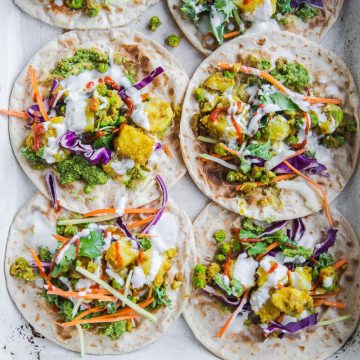
Ingredients
For the samosa mix
- 1 tablespoon olive oil
- 1 teaspoon cumin seeds
- 1 teaspoon fennel seeds
- 3 garlic cloves, minced
- 1 teaspoon fresh grated ginger
- 1 red chilli, finely chopped (optional)
- 4 medium potatoes, boiled peeled and diced
- 1 cup frozen green peas
- ½ teaspoon ground turmeric
- 1 teaspoon ground cumin
- 1 teaspoon ground coriander
- ½ teaspoon garam masala
- ½ teaspoon chaat masala
- 1 teaspoon sea salt flakes, or to taste
For the green chutney
- 1 bunch fresh coriander leaves and stalks
- 12-14 mint leaves
- 1 small green chilli
- 1 garlic clove
- ½ inch piece of ginger
- juice of 1 lemon
- ¼ cup toasted peanuts
- 1 teaspoon raw sugar
- ½ teaspoon sea salt flakes
- ½ cup water
to serve
- 6 rotis, (or tortillas)
- fresh coriander, greens, shredded cabbage, julienned carrot, hot sauce, coconut yoghurt, sweet sauce or chutney
Instructions
- Place all ingredients for the chutney in the bowl of a small food processor and blend until smooth.
- Heat oil in a large sauté pan on medium heat. Add the cumin seeds, fennel seeds, garlic, ginger and chilli. Sauté for a minute.
- Add the potatoes, peas, spices and seasoning. Mix well. Adjust seasoning to taste and cook uncovered on slow heat for 10-15minutes until heated through.
- To serve, spread green chutney on the rotis. Top with salad greens, shredded cabbage and julienned carrots. Add the samosa mix. Drizzle with yoghurt, hot sauce or sweet chutney. Roll or wrap and enjoy.

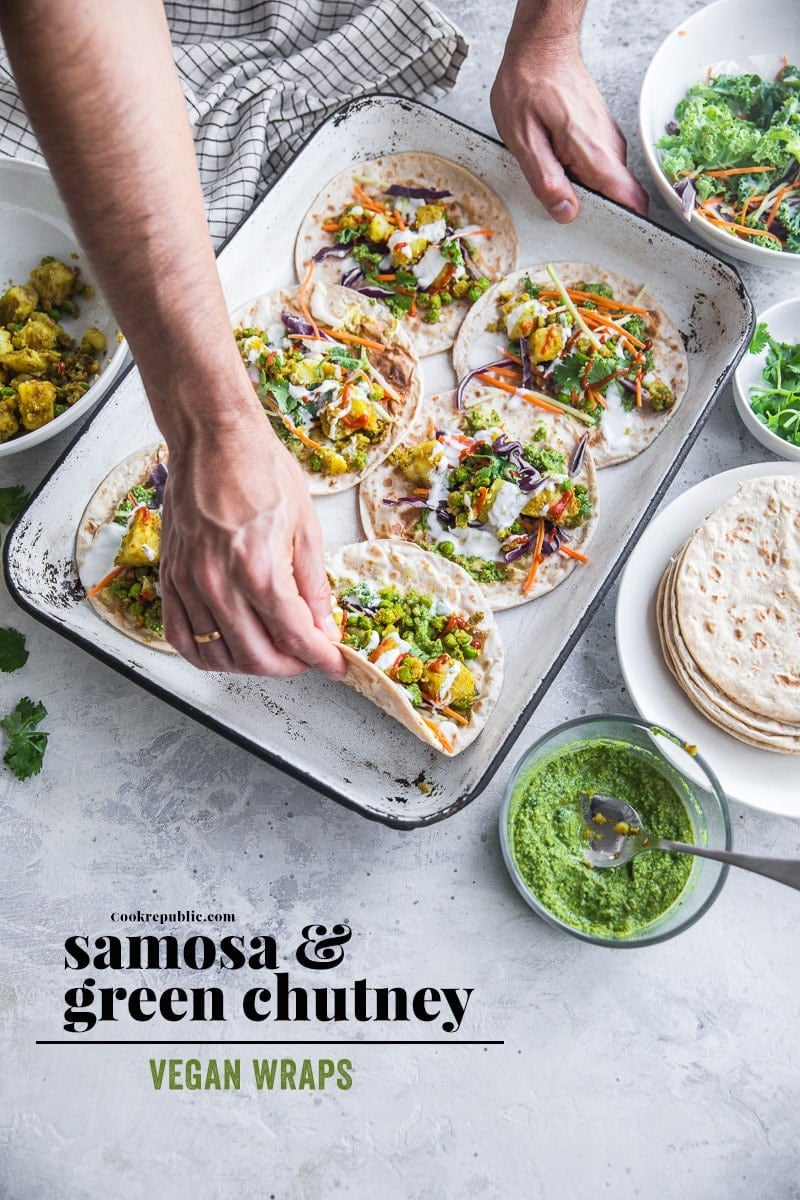
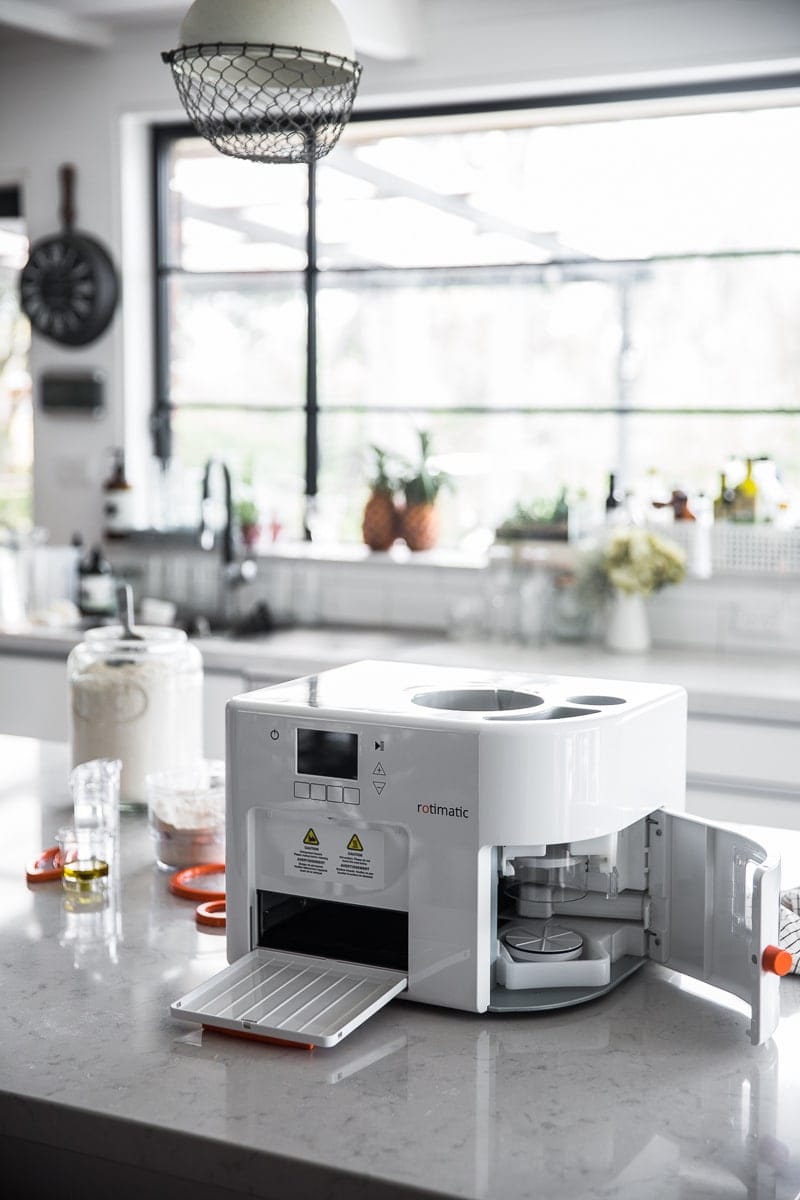
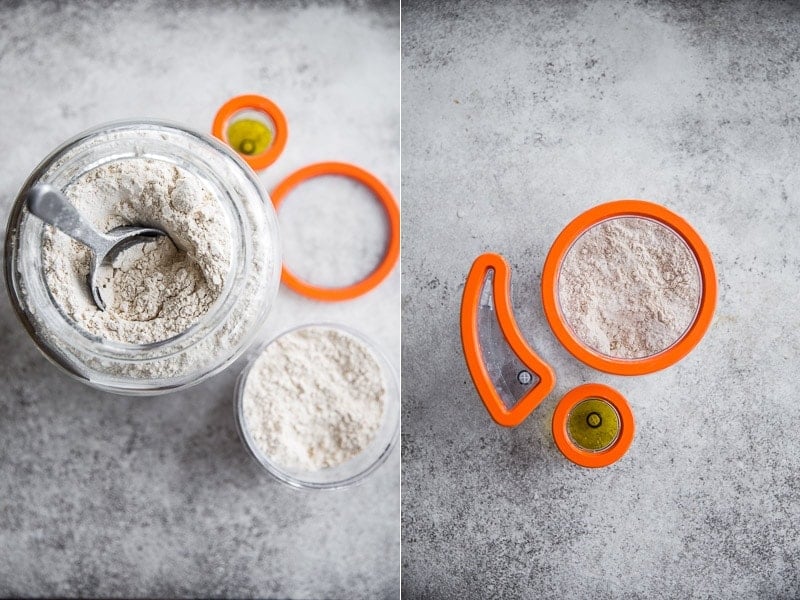
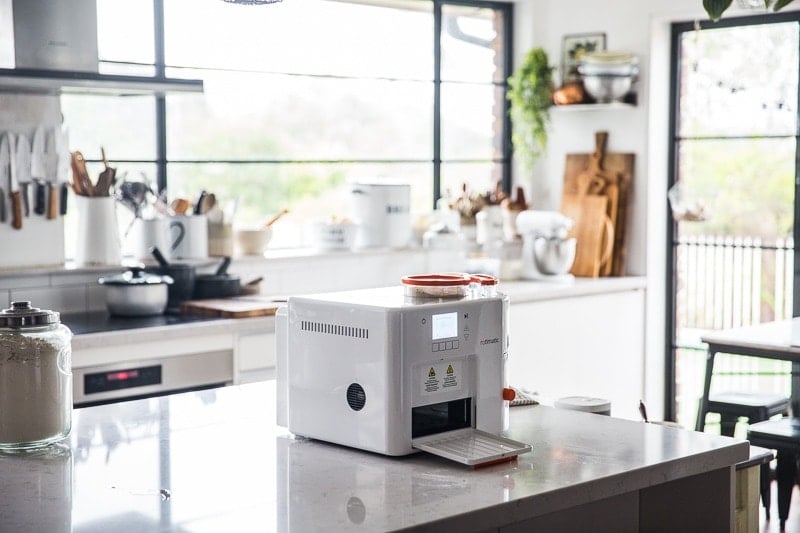
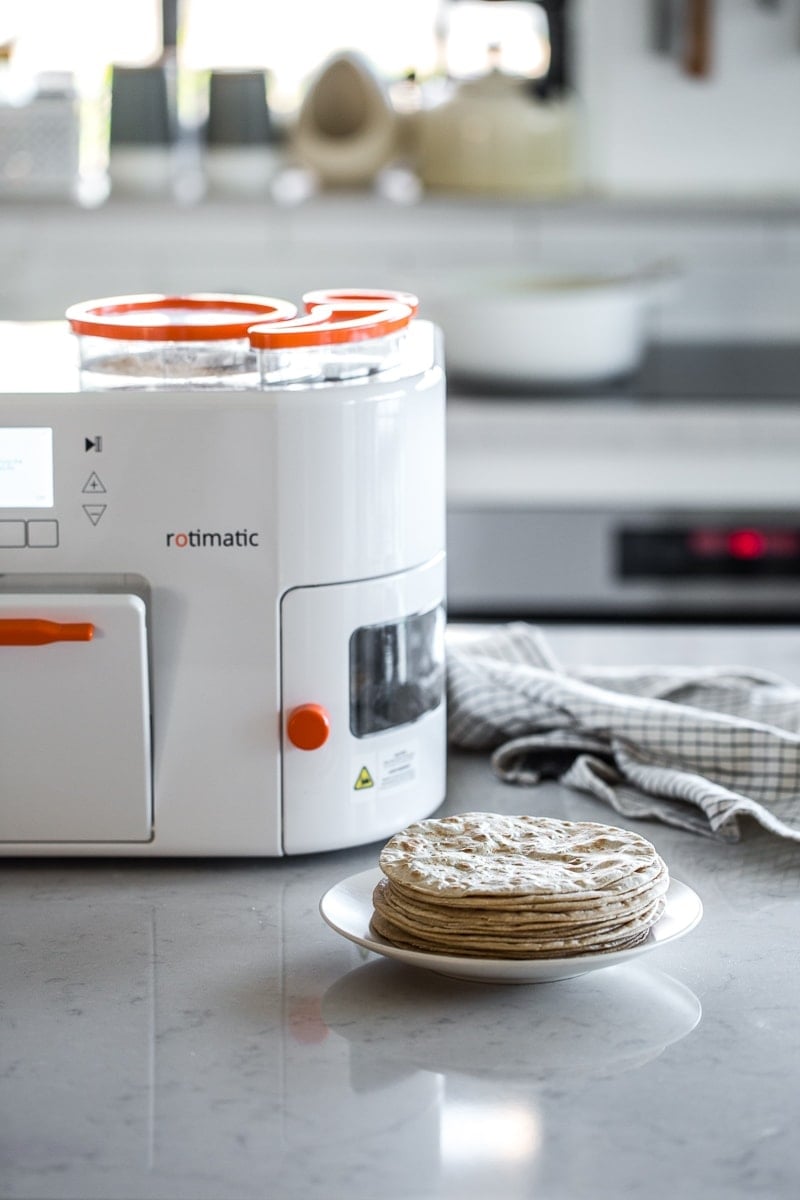
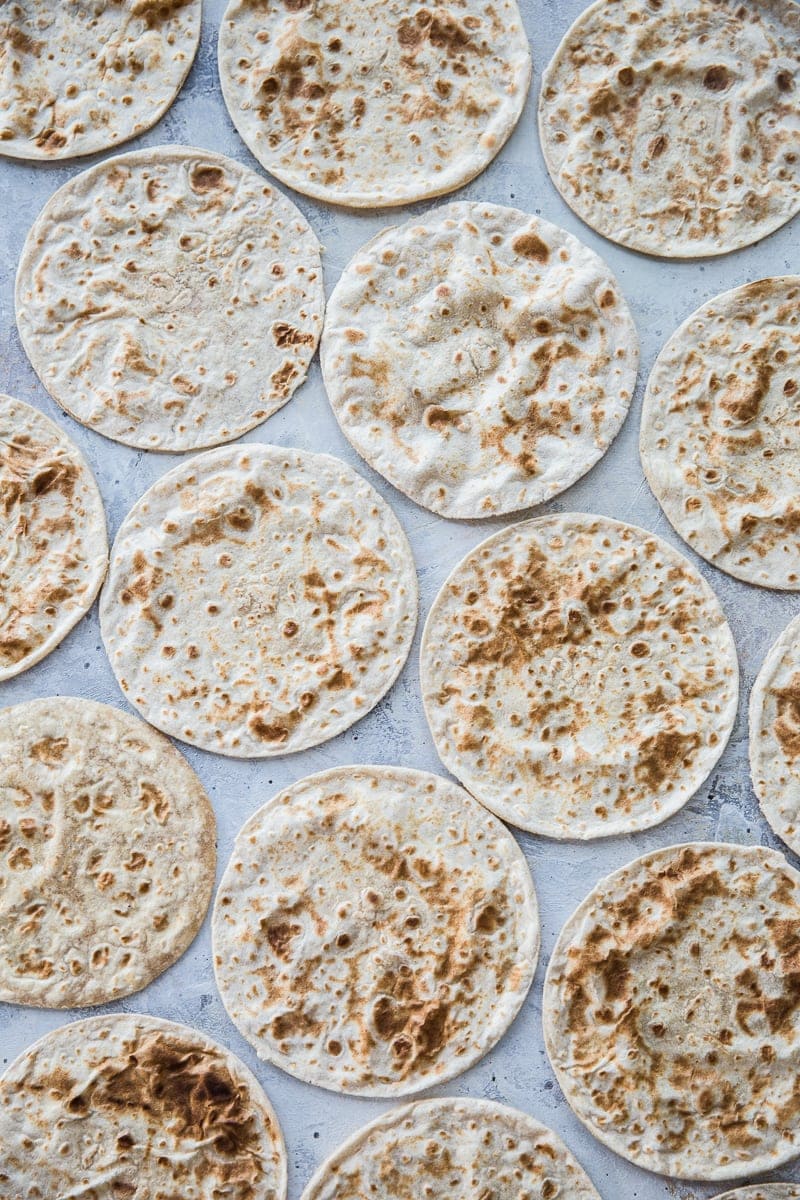
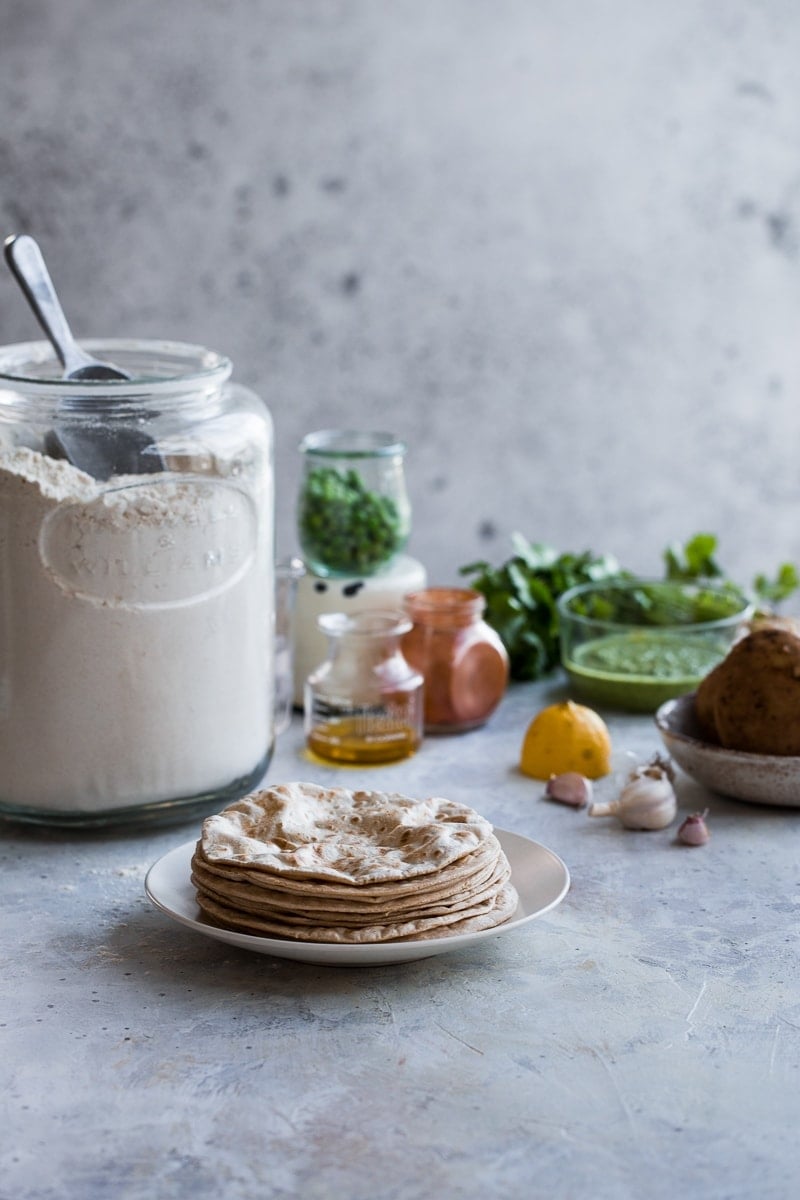
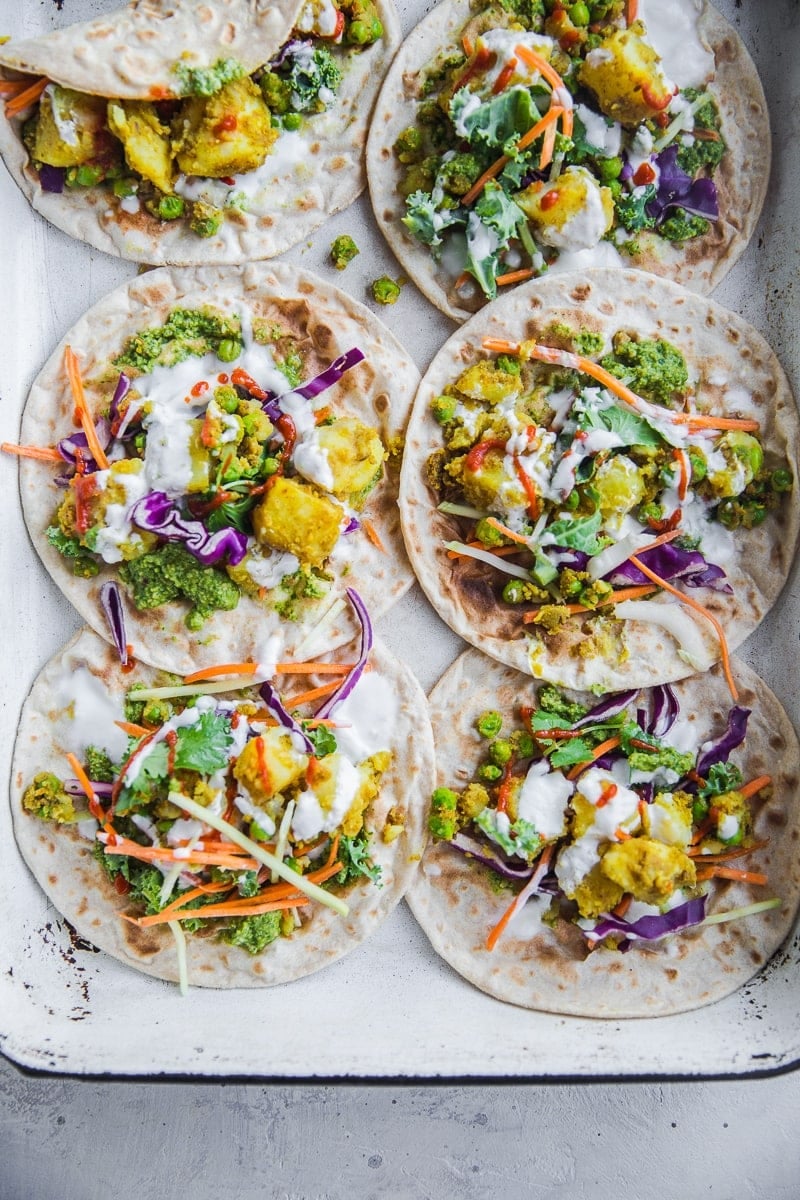
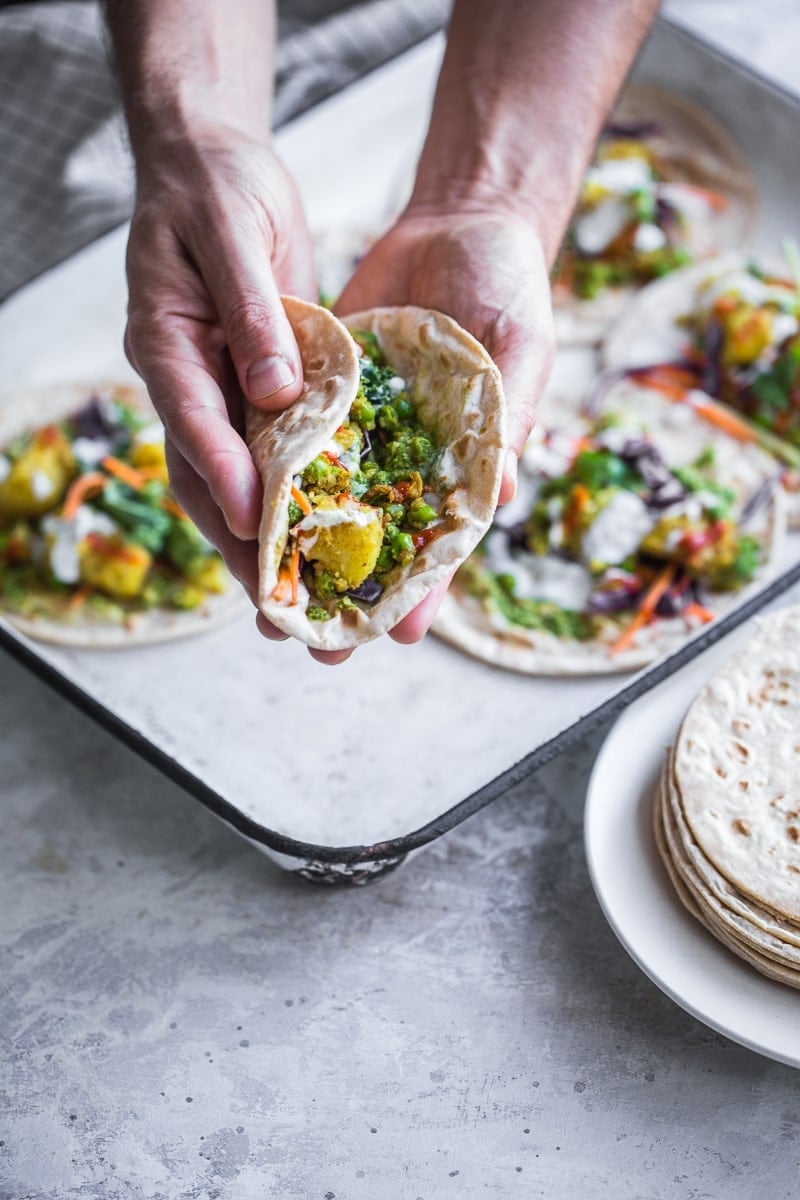
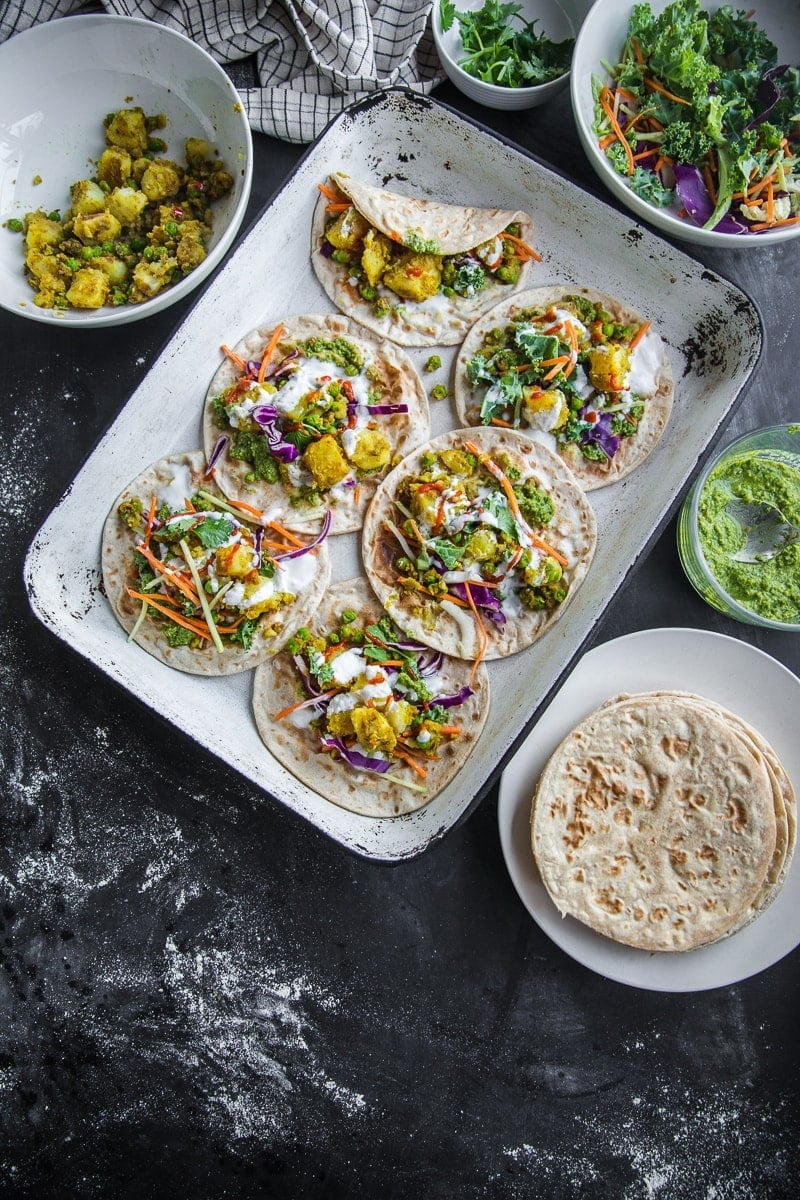


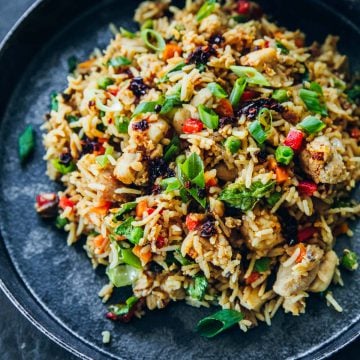
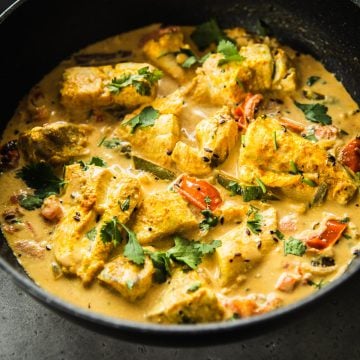
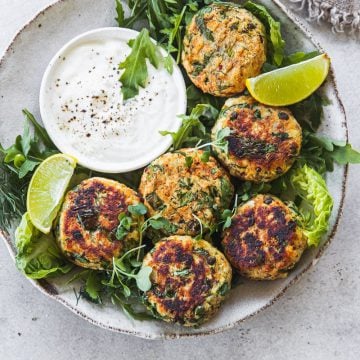
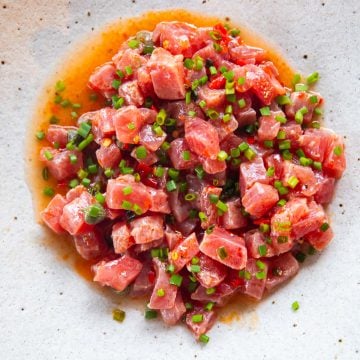

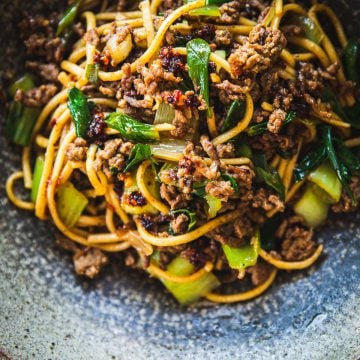
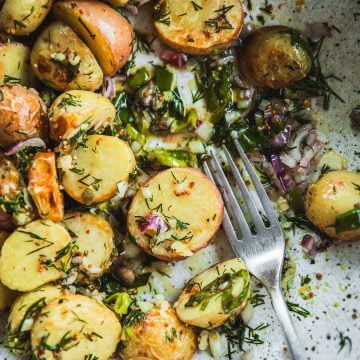

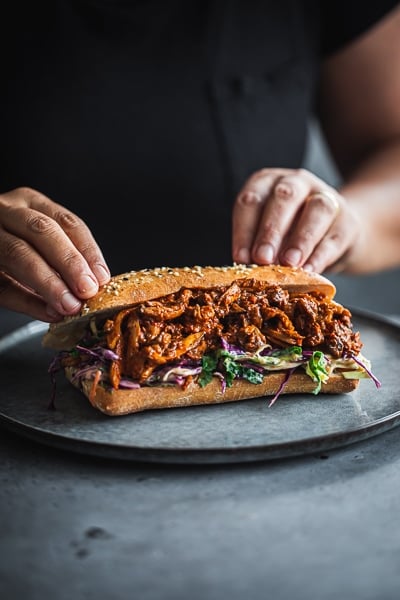
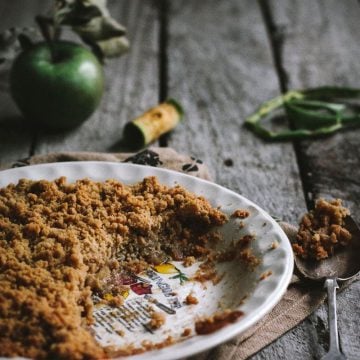
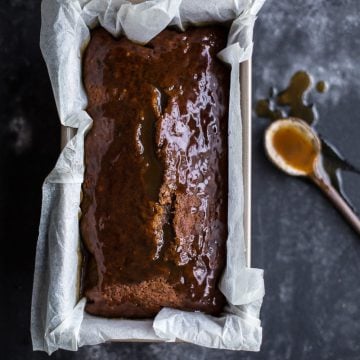
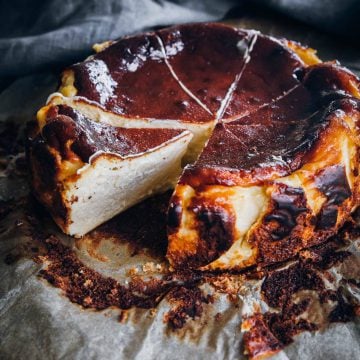

This is one of the most delicious meals I've ever made. Thank you!
I am a big fan of samosas and nice review. The thing is I have got tired searching them here in Brisbane. Let's see if I can make this recipe.
I loved your review about the Rotimatic. Can you share more recipes like this one? I have recently bought it and would like to try different dishes.
Thanks,
Jenny
My favorite Samosa with a different recipe. Looks like it will yummy. Going to try and test it soon.
Just like you, I've been intrigued by the Rotimatic for a number of years now and have been bugging my husband to get me one. Having grown up in a Punjabi household, rotis were a staple but the busy lifestyle that we lead, there's just no time when we get home from a long day in the office to roll out fresh rotis. Thank you so much for your honest review.
I like your rotimatic reviews and their looks so healthy, yummy as well, thanks for sharing!!
Wow, Looks so yummy and delicious
The food looks healthy and delicious. I love the colors even and aromatic spices. I never knew about Rotimatics before now. Going to pin this to my Pinterest board to try later.
Thanks for sharing.
Thanks for your review. Have you tried making rotis in the rotimatic without oil? I normally make rotis without adding any oil in the dough. Only add oil in the dough for parathas. If you cannot make it without any oil, then could you give an estimate of the ratio of flour, oil and water you add in and the number of rotis made of it?
Adity, thanks for your query. It is a good one. I haven't made the rotis without oil because that is essentially how I have made them since I was a child. Mum taught me to add a little drizzle (very light) to the roti dough while kneading it. This was essential to getting softer rotis that didn't crack around the edges, she told me. It also keeps the rotis pliable after cooking instead of crisping up in time.
For the rotimatic, they suggest filling up the oil container (which is quite small. I am guessing 1/3rd of a cup or 1/2 cup). I actually just added a tablespoon of oil. But the great thing is that the oil dispensing is completely up to you. If you look at the big header image on this page https://rotimatic.com/. It shows you "Thickness"/"Roast Level"/"Oil". I always choose "oil" as 1 which means it barely uses any oil. So if I added 1 tablespoon of oil, about 4 cups of flour and 2-3 cups of water; it makes about 12 rotis and the oil container looks pretty much like when I started but most of the flour and water is used up. I add about a tablespoon every 25-30 rotis. Hope that helps. x
Oh my, now one of these is on my wish list! I wonder if/ when they will be available in the UK?
Joanna, they are available in UK (and US and Australia and some other countries too).
Nice post about the Rotimatic review, it looks so useful appliance definitely want to have this. Thanks a lot for the review.
The recipes of wraps sound great. Thanks for sharing the post.
I really enjoyed reading your honest review.
We don't eat roti enough but we do eat wraps. I have always thought about making wraps as store bought ones are full of preservatives, etc. I might need to save up.
Good one
Ange x
Ange, the best part about rotis is that they essentially double up as wraps. In fact, the rotis made in the Rotimatic definitely have a "wrap" consistency. I totally agree with making your own especially if you are only using 3 ingredients. How good is that?